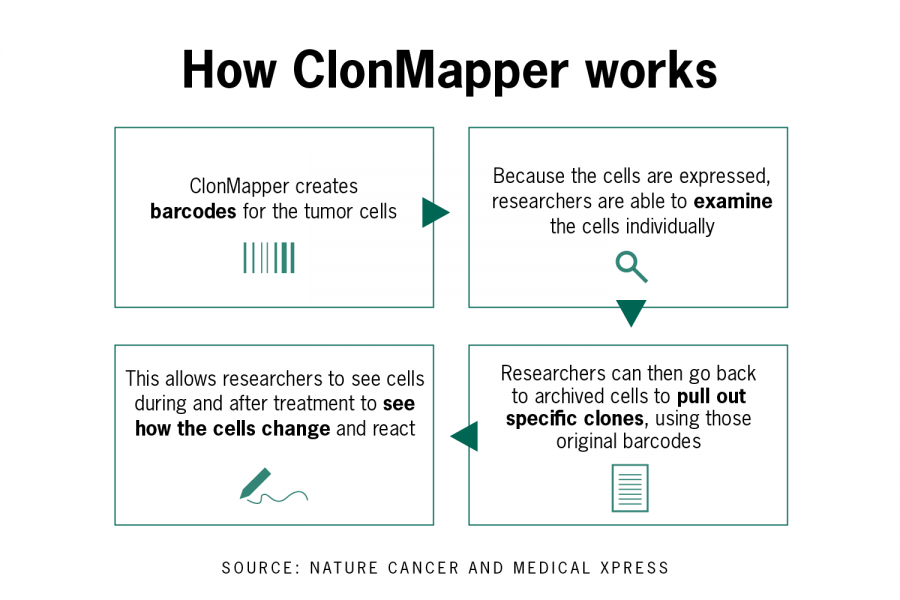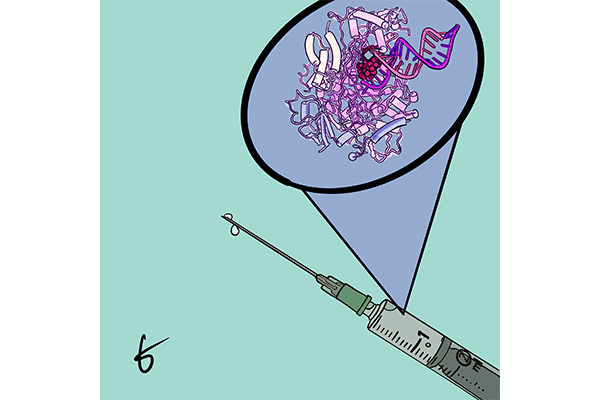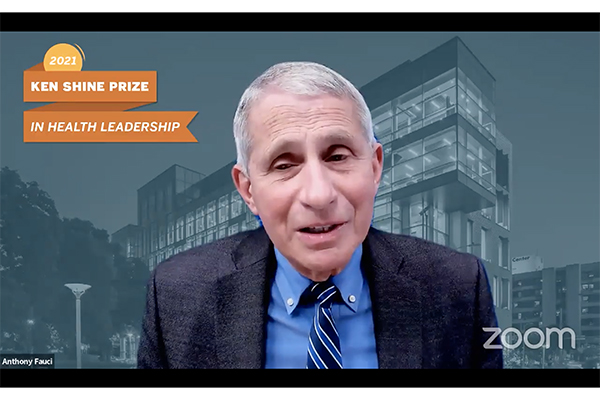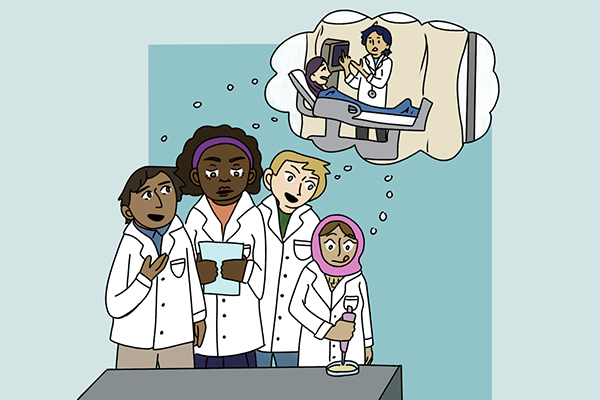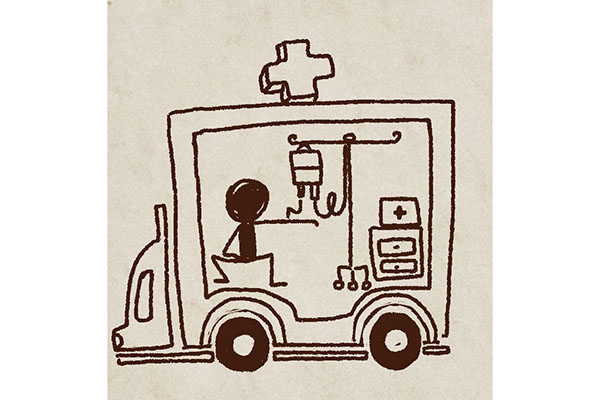A new study by UT Southwestern Medical Center researchers is challenging one of the oldest assumptions about how cancer is fueled.
The Warburg effect, or the observation that cancer cells primarily use glucose and secrete lactate as a waste product, is one of the oldest observations within the field concerning cancer metabolism. The study, led by research fellow Brandon Faubert and Ralph DeBerardinis, chief of pediatric genetics and metabolism at UT Southwestern, found that lactate may instead serve as fuel for cancer cells.
“Lactate, or lactic acid, is usually thought of as a waste product by the body, and in particular, of tumors,” DeBerardinis said. “But lactate is also a fuel for some tissues in the body. It circulates at high levels. So we wondered whether lactate was one of the other fuels that these lung tumors were consuming.”
The researchers began by tracking glucose metabolism in lung cancer patients. While cancer patients usually receive IV infusions of glucose during surgery, patients in the study were instead given infusions with glucose containing carbon-13, a stable, nonradioactive isotope of carbon.
Carbon-13 circulates in the body, enters cells and can be found in the cell metabolites, according to DeBerardinis.
Once the surgery was complete, the researchers analyzed sections of both normal and tumor tissue for carbon-13 levels.
The researchers found that the pattern of carbon-13 labeling suggested that glucose was not the only source of energy. Instead, cells likely also used lactate as a fuel and were actively importing it into the tumor.
To test their hypothesis, the researchers infused patients with lactate labeled with carbon-13.
Their results, as well as further experiments with mouse models, confirmed their initial hypothesis. They found that lactate was a source of energy for cancer cells, particularly for the Krebs cycle, one of the later stages in typical glucose metabolism.
These findings contradict the Warburg effect, which states that glucose is the main source of fuel, and may heavily alter how we view cancer metabolism.
“The data suggests that lactate is much better at feeding the Krebs cycle than glucose is. That suggests that actually lactate is a major fuel in these tumors,” DeBerardinis said. “Lactate is a prominent (fuel for tumors) that we had not suspected based on the century of research on cancer metabolism.”
One of the main reasons that research has missed the use of lactate as fuel until now, DeBerardinis said, is because most work has studied tumors outside of the body, such as in petri dishes.
“Most of what the field has done, and most of what my lab has done, to be fair, is studying cancer cells outside of the body where the environmental conditions are very different,” DeBerardinis said. “When you put cells back in the body, the availability of lactate is higher and the availability of glucose is lower than in culture.”
While further research is needed, this work may have important applications, according to the researchers.
“One of the exciting correlations we found, despite the fact that they are preliminary, is that the tumors that are using more lactate do tend to be the more aggressive ones,” Faubert said. “And exploring that angle is going to be exciting.”
This correlation may impact how physicians image tumors in cancer patients, DeBerardinis said.
“So if we had an imaging method to test if tumors had a higher or lower propensity to take up lactate, that might help us predict which tumors were most likely to be aggressive,” DeBerardinis said.
For example, although glucose tracers are currently being employed to identify tumors, a lactate tracer could also have predictive value, DeBerardinis said.
The researchers said their next step is to determine if the same lactate metabolism occurs in other cancers.
“I’m working with a thoracic surgeon (on esophageal cancer),” Faubert said. “We are beginning to explore and see if this happens elsewhere, other than the lung.”




